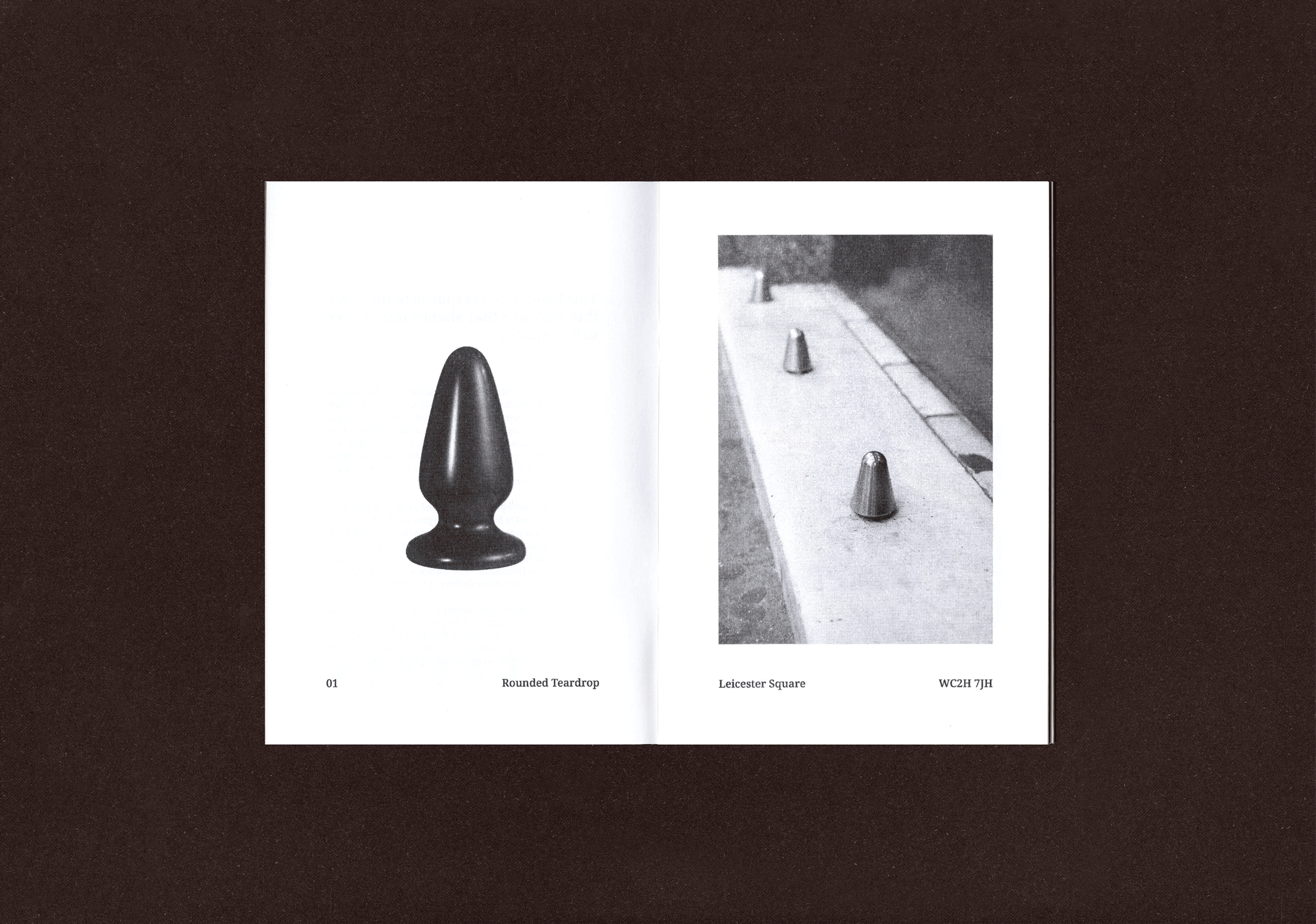This booklet is a
response to the silent violence embedded in everyday urban spaces.
Hostile architecture, including spikes, segmented benches, and seemingly innocuous barriers, functions not just as a physical obstruction but as a language of exclusion. These structures are designed to manage bodies, enforce order, and render certain people invisible. Often unnoticed by the majority, they quietly dictate who is welcome and who is not.
By juxtaposing models of real, commercially available butt plugs with photos of hostile spikes, I am not inventing a comparison; I am simply pointing out an existing fact. Two objects with such similar shapes can serve completely opposite functions—one offers a warm invitation, while the other delivers a cold rejection.
This work is not about solutions, but about shifting perception. It is about forcing a pause, a laugh, or perhaps a flinch—small disruptions that might reveal the hidden borders in our cities, and the systems that uphold them.
这本册子回应的是日常城市空间中所隐藏的无声暴力。
敌意建筑,包括金属尖刺、分隔的长椅,以及看似无害的障碍物,并不仅仅是对身体的物理阻挡,更是一种排斥的语言。这些结构被设计用来管理身体、维持秩序,并让某些人群变得隐形。它们常常被大多数人忽视,却悄无声息地决定了谁是被欢迎的,谁是被排除的。
通过将真实存在且可在市面上购买的肛塞模型与敌意尖刺的照片并置,我并不是在发明一种比较,而只是指出一个已经存在的事实。两个形状如此相似的物体却能发挥完全相反的功能——前者热情邀请,后者冰冷拒绝。
这项作品并不试图提供解决方案,而是试图改变人们的感知。它希望让人们停下脚步、发出笑声,或本能地退缩——这些微小的扰动也许能揭示城市中那些被隐藏的边界,以及维系它们的系统。
Hostile architecture, including spikes, segmented benches, and seemingly innocuous barriers, functions not just as a physical obstruction but as a language of exclusion. These structures are designed to manage bodies, enforce order, and render certain people invisible. Often unnoticed by the majority, they quietly dictate who is welcome and who is not.
By juxtaposing models of real, commercially available butt plugs with photos of hostile spikes, I am not inventing a comparison; I am simply pointing out an existing fact. Two objects with such similar shapes can serve completely opposite functions—one offers a warm invitation, while the other delivers a cold rejection.
This work is not about solutions, but about shifting perception. It is about forcing a pause, a laugh, or perhaps a flinch—small disruptions that might reveal the hidden borders in our cities, and the systems that uphold them.
这本册子回应的是日常城市空间中所隐藏的无声暴力。
敌意建筑,包括金属尖刺、分隔的长椅,以及看似无害的障碍物,并不仅仅是对身体的物理阻挡,更是一种排斥的语言。这些结构被设计用来管理身体、维持秩序,并让某些人群变得隐形。它们常常被大多数人忽视,却悄无声息地决定了谁是被欢迎的,谁是被排除的。
通过将真实存在且可在市面上购买的肛塞模型与敌意尖刺的照片并置,我并不是在发明一种比较,而只是指出一个已经存在的事实。两个形状如此相似的物体却能发挥完全相反的功能——前者热情邀请,后者冰冷拒绝。
这项作品并不试图提供解决方案,而是试图改变人们的感知。它希望让人们停下脚步、发出笑声,或本能地退缩——这些微小的扰动也许能揭示城市中那些被隐藏的边界,以及维系它们的系统。
